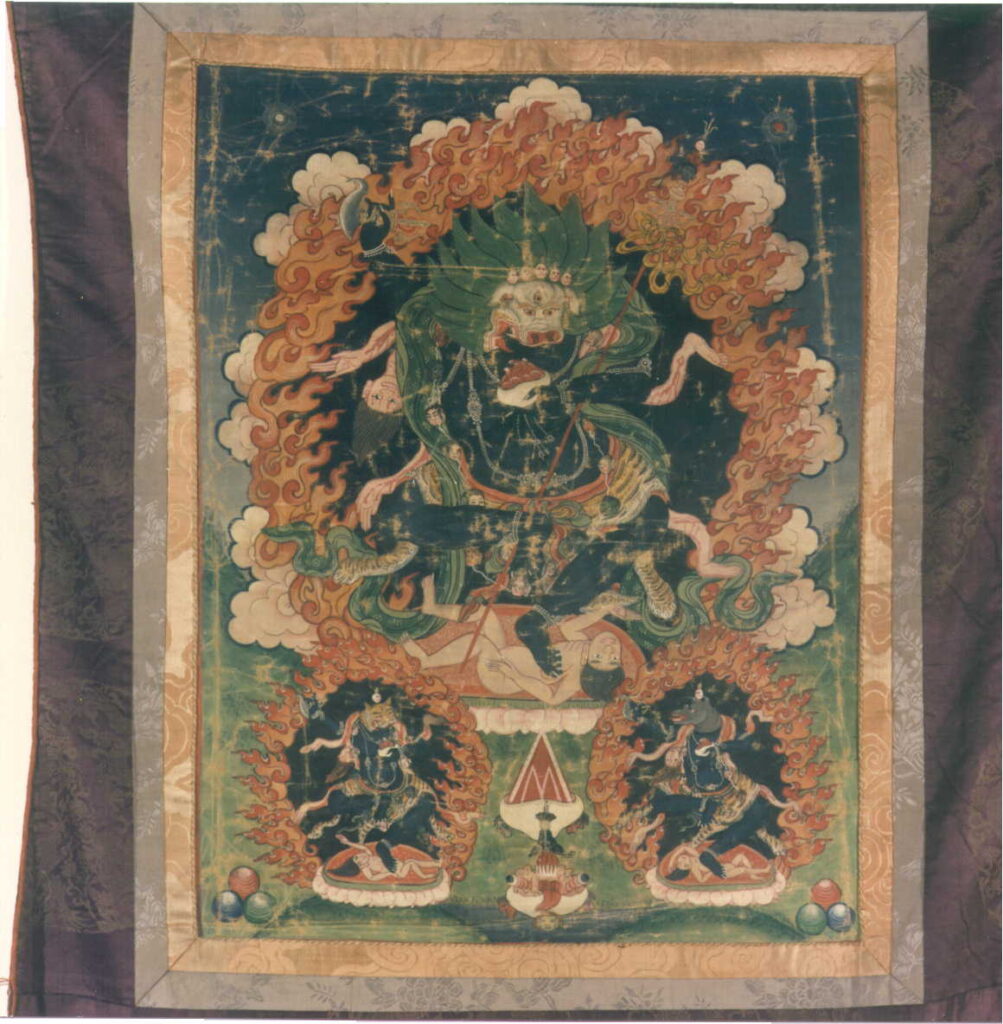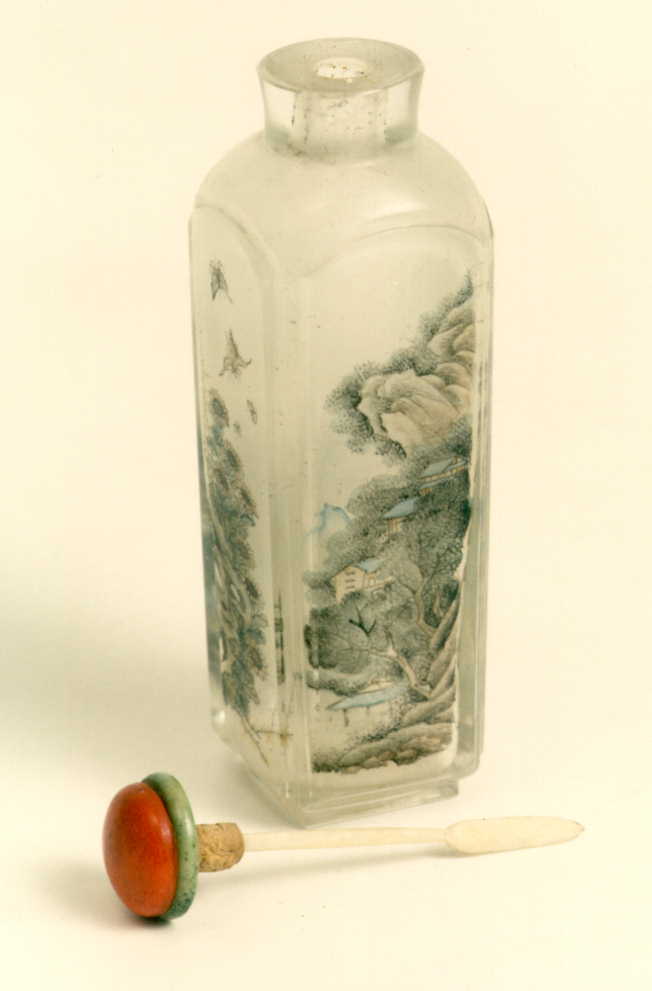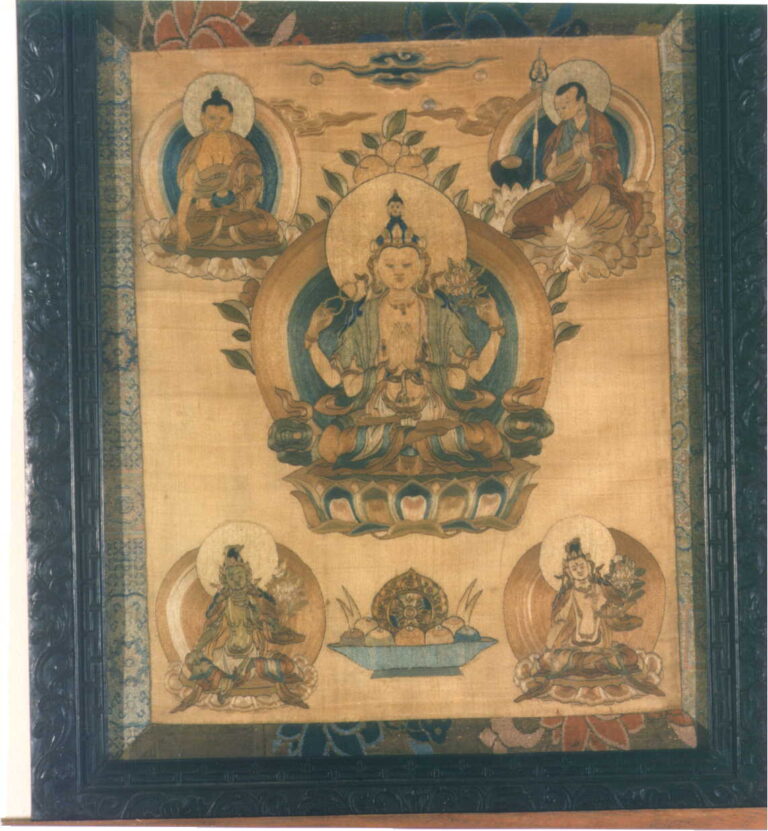YAMA DHARMARAJA, ONE OF THE EIGHT DHARMAPALA OR “GUARDIANS OF THE LAW”.
Painting dedicated to the protective divinity of terrifying aspect Yama Dharmaraja, the King of the Law, who occupies the most prominent place of the composition accompanied by two guardians, represented at his feet in smaller size. The three figures are framed in a halo of fire, as opposed to the halo of light that surrounds the images of masters, buddhas, bodhisattvas and lamas.Yama Dharmaraja, is a divinity of Indian origin, which is interwoven in Buddhist mythology by association with Mansjuri. Yama Dharmaraja, protector of the law as a doctrine, has a great acceptance in the representations of Tibetan Buddhism and in a special way in those related to the Gelukhpa sect. Its founder, Tsonghapa, is identified with Mansjuri and the latter with the protector god, each of the images of the protector gods can be manifested in their internal, external or ultimate form. In this case it manifests itself in its external reality, thus adopting its head, that of a buffalo. Yama Dharmaraja’s body is painted in a dark color, flailing in a frenetic movement with his arms and legs. The right leg folds in a rhythmic action that is balanced by the slight support he exerts with his right leg on the naked torso of a figure lying under his feet. In his upper arms he holds in each one of them an attribute. Thus with the right he holds a knife with a vajra-shaped handle, called kartrikâ, while with the left, the trident that characterizes him is topped by skulls strung on its tip, along with a vajra and a bow, known as khatvânga or magic scepter.His forehead is adorned with a diadem formed by skulls, which are repeated in a long necklace that runs along his body. He is partially covered with a tiger skin and his back shows the remains of a human being covered with blood in direct allusion to death. All its iconography highlights its violent, protective character, which will find its rest when it destroys the ignorance to which it alludes with the naked body on which it supports the force of its dance.at its feet two other terrifying images of protective divinities or yamas, which acquire, the one on the right face of tiger and the one on the left of rhinoceros, repeating in both cases the iconographic elements related to death and destruction. / Extracted from: Isabel CERVERA FERNÁNDEZ: Fundación Rodríguez-Acosta. Asian Art Collection. Bibliography: RHIE, M.; THURMANN, R.: Wisdom and Compassion. The Sacred Art of Tibet. New York, 1992, pp: 108?109.




